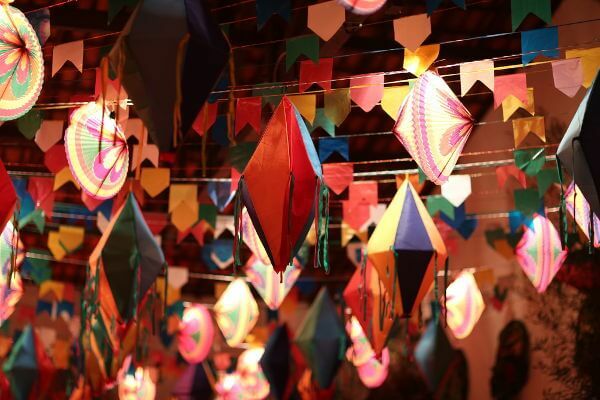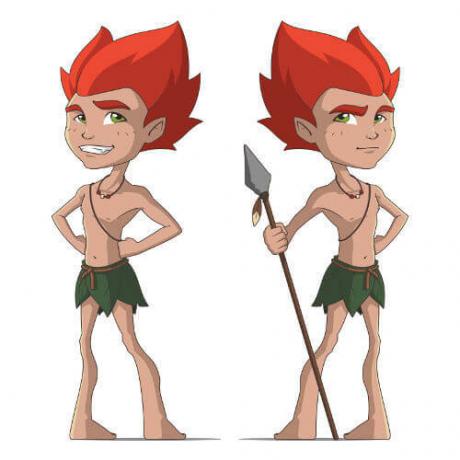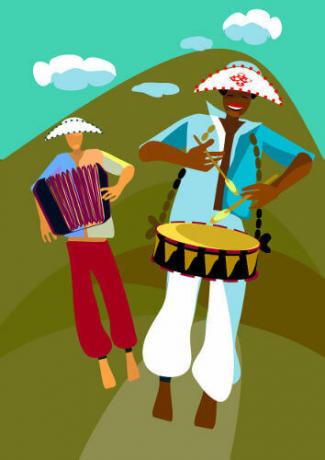O folklore Brazilian is the set of achievements that are part of the culturepopularBrazilian. Within this definition, tales, legends, songs, rhythms, songs, popular festivals, jargon, literature, etc. can be included. Studies in the area of Brazilian folklore began timidly in the 19th century and were consolidated in the following century.
Extremely rich, our folklore has influencesgivescultureEuropean,Africanand indigenous – a result of the cultural diversity that exists here. Not to mention folkloric characters such as Saci-Pererê, Curupira, Boitatá, Iara, among others.
read more: Monteiro Lobato: one of those responsible for popularizing characters from our folklore
History of Brazilian Folklore
O folkloreBrazilian While study area it only gained strength in Brazil from the 20th century onwards, but the roots of this research in our country go back to the 19th century. This was possible thanks to influenced Romanticism, artistic and literary current that had great importance in Brazil. This current was associated with
movementsnationalists and sought to highlight elements of national culture.This idea was reinforced with the Modernism, artistic and literary current that was in evidence in Brazil at the beginning of the 20th century. The modernist movement had idealsboastful and idealized the interiorofBrazil as a place of true Brazilianness.
![The modernist writer Mário de Andrade was one of the main scholars of Brazilian folklore.[1]](/f/118b6878ff6e4dadea93c41337a6c08e.jpg)
The modernist writer Mário de Andrade was one of the main scholars of Brazilian folklore.[1]
The study of folklore came to be seen as a way of value the national culture. In the 19th century, authors like AmadeuAmaral and SilvioRomero played an important role in consolidating this study. At the beginning of the 20th century, other names, such as Mario de Andrade and ArthurBranches, gained notoriety in this field of knowledge.
THE importance of Mario de Andrade the strengthening of studies on Brazilian folklore was reinforced in the 1930s, when he was head of the Department of Culture of the State of São Paulo. The studies developed began to bring the study of folklore closer to the fields of human and social sciences.
In the 1940s, Unesco, an entity linked to the UN, recommended the study and preservation of national folklore, and this had great influence in Brazil, resulting in the creation of National Folklore Commission, in 1947. The growth of the study of folklore led to the organization of I Brazilian Congress of Folklore, in Rio de Janeiro, in 1951.
Through this congress, what was folklore and what should be considered as part of Brazilian folklore was debated. The document issued by this congress became known as Brazilian Folklore Letter and it guided the debates and studies on folklore during the following decades.
According to this document, it was established that the study of folklore was part of the Sciencesanthropologicalandcultural. In addition, folklore was defined as "the ways of thinking, feeling and acting of a people, preserved by popular tradition" and that elements that make up folklore (called "folk fact") had some characteristics, such as collective acceptance and origin popular|1|.
In 1958, during the government of Juscelino Kubitschek, was created the Brazilian Folklore Defense Campaign (CDFB) through the Ministry of Education and Culture. The objective of this campaign, obviously, was to guarantee the preservation of the Brazilian folklore collection. The 1960s featured the Brazilian Folklore Magazine as a great diffuser of studies carried out in the area.
O 1964 military coup it ended up being a cold water bath in the growth of studies on Brazilian folklore. Institutionally, the actions and studies carried out in this area by the CDFB were interrupted by the dictatorship and were only resumed from 1976 onwards. The symbol of the repression that began with the dictatorship and that was directed against the CDFB (but not only against it) was the closing of the building in which it was located. On the door of the building, there was a poster with the words: "closed because it is a den of communists"|2|.
From the 1990s onwards, studies on folklore gained new impetus in Brazil. A big milestone was the VIII Brazilian Congress of Folklore, which took place in Salvador, in 1995. Based on the 1951 Brazilian Folklore Letter, this congress issued a new document with important updates.
Since then it has been defined that “folklore is the set of cultural creations of a community, based on their traditions expressed individually or collectively, representative of their identity Social"|3|. Another important determination was the guarantees of preservation of folklore patrimony given by the 1988 Constitution, in its articles 215 and 216.
Read too: Modern Art Week: one of the main artistic events in the history of Brazil
Manifestations of Brazilian folklore

The June festivals are one of the most traditional festivals in Brazilian popular culture.
Using as a basis the definition given in the VIII Brazilian Congress of Folklore, 1995, we can state that Brazilian folklore is the result of cultural creations of a community, therefore, we can include within the folklore not only the tales and stories of folk characters, but also the musical rhythms, dances, popular festivals, games, etc.
See some examples of manifestations of Brazilian folklore:
June celebration
Kings' Folia
Carnival
Samba
Maracatu
Catira
baião
Frevo
Literature of twine
kite flying game
Brazilian folklore characters


Curupira and Mula sem Cabeça are two well-known characters in Brazilian folklore.
A very important part of our folklore is the ourlegends, who made characters and beingsmythical that reproduce important characteristics of the three cultures that influenced the formation of Brazilian culture. See some of these characters:
Saci-Pererê: folklore entity known for being mocking. Saci is a little black boy known for playing tricks against travelers and rural residents. He has one leg and wears a red hat.
Boitatá: fire snake that, in legend, attacked those who set fire to the forest.
Curupira: forest entity that is small, has red hair and feet backwards (heels forward). He was a kind of protector of the forest that terrified those who destroyed it.
pink dolphin: to be well known in Amazonian folklore who, in legend, transformed himself into a seductive man who frequented parties, seducing and getting pregnant single women.
Headless mule: in popular tradition, women who lay with religious priests could be cursed and turn into a galloping mule releasing fire through its head and haunting those who finds.
See too: Senhor do Bonfim: the honoree of one of the main religious festivals in Brazil
Brazilian Folklore Day

Baião is one of the best known manifestations of Brazilian popular culture in music.
Currently, there is in Brazil the Brazilian Folklore Day, which is celebrated in August 22. The creation of the Brazilian Folklore Day took place through the Decree No. 56,747, which was signed on August 17, 1965 by the then military president, Humberto Castello Branco. The purpose of creating this day was to encourage studies in the area and ensure the preservation of Brazilian folklore.
August 22 was chosen as an important milestone in studies in this area of knowledge. On August 22, 1846, the English writer had an article published in an English magazine suggesting the creation of the word “folklore”, arguing that it meant “the traditional knowledge of a people”.
Image Credit:
[1] rook76 and Shutterstock
Grades
|1| BRANDÃO, Carlos Rodrigues. What is folklore. São Paulo: Brasiliense, 1984, p. 31.
|2| NATIONAL CENTER FOR FOLKLORE AND POPULAR CULTURE. Paths of Popular Culture in Brazil. To access, click on here.
|3| LETTER FROM BRAZILIAN FOLKLORE. VIII Brazilian Congress of Folklore. To access, click on here.
By Daniel Neves
Graduated in History
Source: Brazil School - https://brasilescola.uol.com.br/historiab/folclore-brasileiro.htm

